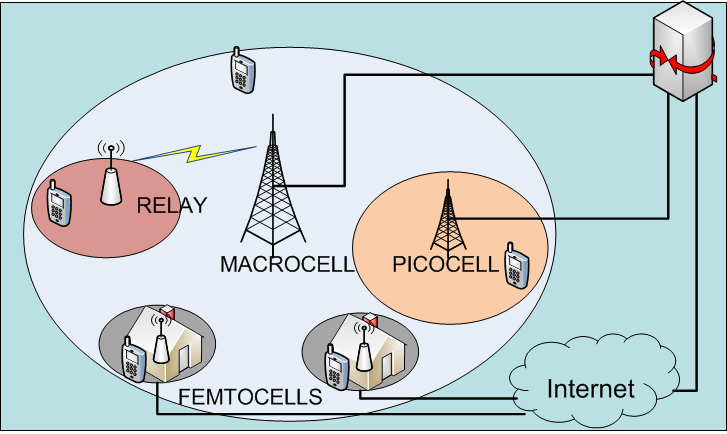School of Electrical and Computer Engineering Georgia Institute of Technology
Small Cells for Beyond 4G Cellular Systems
Project Description
The proliferation of wireless mobile devices including smartphones and tablets has tremendously increased the need for high-speed broadband services. Cisco has recently forecasted an 18-fold traffic increase (10.8 exabytes per month) by 2016. In this context, cellular networks are faced with the challenges of providing enormous system capacity and achieving superior cellular coverage. Studies also show that more than 50% of voice traffic and 70% of cellular data traffic originate from indoor and enterprise environments. According to small cell forum, the capacity gain achieved in cellular networks using different techniques is indicated in Table 1.
| Technique | Capacity Gain |
|---|---|
| Frequency Division | 5 |
| Modulation Techniques | 5 |
| Access to wider range of spectrum | 25 |
| Frequency reuse using more cell sites | 1600 |
Among the different approches in Table 1, it is clear that spatial frequency reuse using more cell sites offers the greatest capacity gain. Therefore, to meet such a demand, small cells, planned or uncoordinated cellular systems of smaller coverage based on the concept of frequency reuse, are utilized by wireless carriers as one of the primary solutions to improve signal quality, cellular coverage and capacity at the edge of macrocells and in indoor environment. The whole small cell market value surpassed $200 million in 2012 with more than 5 million small cells already deployed and forecasts showing that the deployments of small cells will grow exponentially and reach over 90 million units by 2016.
Small cells offer several benefits. These include i) over two orders of magnitude increase in overall capacity, ii) cost-effective coverage extension, and iii) green radio solution. Small cells vary between each other in several ways including coverage area, physical size and backhaul technology and can be utilized for both indoor and outdoor deployments. In general, there are four common deployment configurations for small cells:

Figure 1 - Next generation cellular systems with small cells
Inspite of their potential benefits, small cells introduces several challenges and calls for a profound rethinking of several existing approaches for interference management, mobility management, energy savings, backhaul management, massive MIMO, and new carrier types, among others.
[Back to top]You are visitor:
since 08/23/2013.